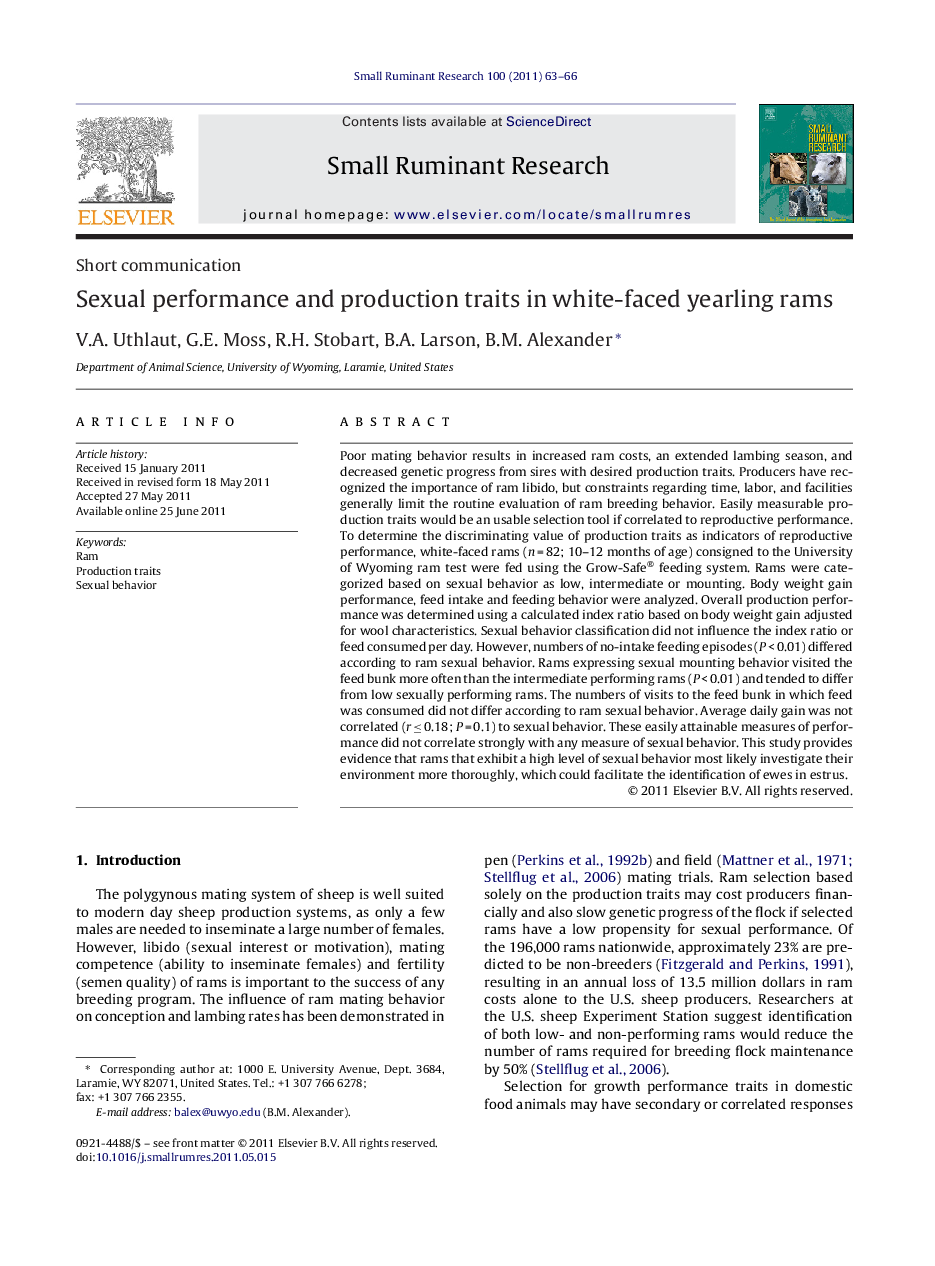| Article ID | Journal | Published Year | Pages | File Type |
|---|---|---|---|---|
| 5796405 | Small Ruminant Research | 2011 | 4 Pages |
Poor mating behavior results in increased ram costs, an extended lambing season, and decreased genetic progress from sires with desired production traits. Producers have recognized the importance of ram libido, but constraints regarding time, labor, and facilities generally limit the routine evaluation of ram breeding behavior. Easily measurable production traits would be an usable selection tool if correlated to reproductive performance. To determine the discriminating value of production traits as indicators of reproductive performance, white-faced rams (n = 82; 10-12 months of age) consigned to the University of Wyoming ram test were fed using the Grow-Safe® feeding system. Rams were categorized based on sexual behavior as low, intermediate or mounting. Body weight gain performance, feed intake and feeding behavior were analyzed. Overall production performance was determined using a calculated index ratio based on body weight gain adjusted for wool characteristics. Sexual behavior classification did not influence the index ratio or feed consumed per day. However, numbers of no-intake feeding episodes (P < 0.01) differed according to ram sexual behavior. Rams expressing sexual mounting behavior visited the feed bunk more often than the intermediate performing rams (P < 0.01) and tended to differ from low sexually performing rams. The numbers of visits to the feed bunk in which feed was consumed did not differ according to ram sexual behavior. Average daily gain was not correlated (r â¤Â 0.18; P = 0.1) to sexual behavior. These easily attainable measures of performance did not correlate strongly with any measure of sexual behavior. This study provides evidence that rams that exhibit a high level of sexual behavior most likely investigate their environment more thoroughly, which could facilitate the identification of ewes in estrus.
